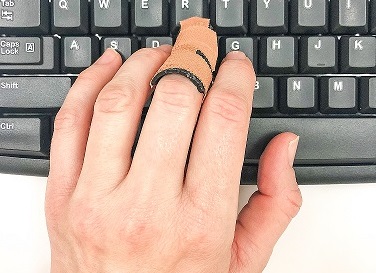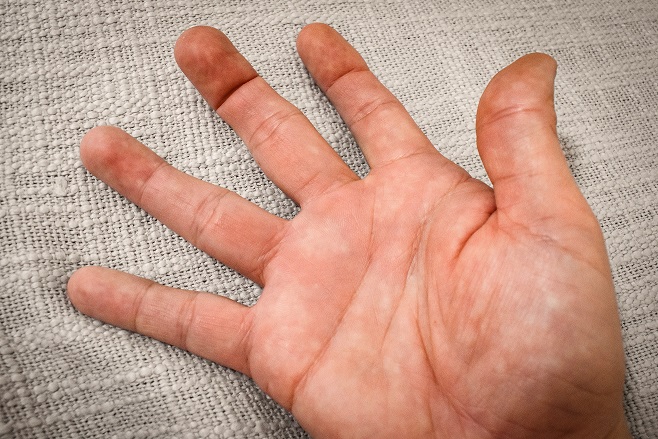Blog post by Erika Lassig
A common fingertip injury occurs when something hits the end of a straight finger forcing it to bend. Often, it’s a ball when playing sport! Afterwards the end joint of the finger doesn’t straighten properly. The resulting drooping fingertip looks a bit like a mallet or hammer, so we call it “Mallet Finger”.
The fingertip droops because the tendon that straightens the end joint is no longer attached to the bone and can’t do its job. Mallet finger can be either a direct tear to the tendon or, more commonly, a piece of bone that is attached to the tendon fractures away. Unfortunately, the problem won’t fix itself and if it’s ignored it can cause long-term pain, stiffness and deformity of one or both finger joints.
If you have a suspected mallet finger injury the first step is to visit your GP for an x-ray. This helps to determine whether there has been a bony injury or tendon injury. In rare cases a relatively large piece of bone breaks off, disrupting the joint entirely and requires surgery to correct the joint alignment. In most cases, there is only a small piece of bone or a tendon injury and this can be treated very effectively with hand therapy. Results are always better if you get treatment as soon as possible. If treatment is delayed by more than three months, it may be impossible to correct the problem and the joint may have to be surgically fused.
Early treatment with hand therapy is very simple! A custom-made splint that holds the tip of the finger very still must be worn continuously for six to eight weeks. It is very important NOT to bend the fingertip at all, not even once, for at least six weeks. If you do, the immobilisation period is reset to day one and you will need to be held in the splint for a further six weeks. Your treating therapist will show you how to safely wash the finger and reapply the splint without bending the fingertip. You will also be given gentle exercises for the middle finger joint to prevent it from getting stiff.
After six to eight weeks in the splint full-time, a gradual weaning process occurs under the guidance of your therapist. It is important that you do not return to sport or manual work without the splint on for 12 weeks after treatment commenced or else you are at risk of re-injuring the finger.
Don’t ignore a drooping finger, the treatment is simple and very effective if started as soon as possible. So don’t delay, if you’ve got any of the above symptoms takes steps towards your recovery and book in with an accredited hand therapist today!




